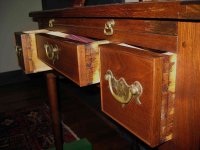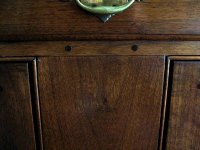wallysandcrab
Well-known member
Al:
Thanks. I'm reading you 5x5. Looking at the pictures on your website of Sam's assembly sequence I came up with another question, for you or anyone.
Do you install the blade blank (dovetailed but not shaped), mark the drawer shape and then remove the blade and work the curves and beads?
The idea of installing a tightly fit dovetail and then removing it always worries me.
Much appreciate all the help
JD
Thanks. I'm reading you 5x5. Looking at the pictures on your website of Sam's assembly sequence I came up with another question, for you or anyone.
Do you install the blade blank (dovetailed but not shaped), mark the drawer shape and then remove the blade and work the curves and beads?
The idea of installing a tightly fit dovetail and then removing it always worries me.
Much appreciate all the help
JD


